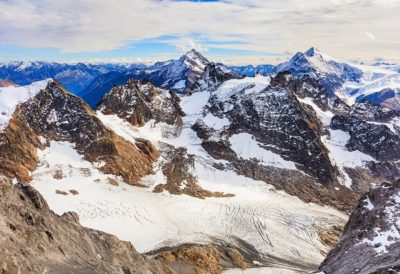
Climate change has allowed a team of glacial archaeologists to find a large number of rare artifacts that would have otherwise remained concealed in the glacial ice for centuries. These artifacts were recovered from the melting ice in the mountains of Jotunheimen and Oppland in Norway. Some of these artifacts are nearly 6,000 years old, according to archeologists, and shed new light on the hunting techniques of the ancient people that lived in some high-altitude regions of Europe.
This archeology project started in 2006 when Lars Pilø, co-director of the Glacier Archaeology Program at Oppland County Council, noticed that Norway was having warmer autumns for the past few years. Pilø started exploring the high mountains of icy Oppland and Jotunheimen and was able to find some ancient items from the snowmelt. The project officially started in 2011 with arrival of an international team of archeologists in Norway to find artifacts from icy mountains in Oppland and Jotunheimen.
Since 2011, the team has being exploring these mountains from mid-August to mid-September, each year, and has found more than 2,000 artifacts from the area. The archeologists divided themselves in two groups to explore the edges of the contracting ice and found a wide variety of ancient items, including arrows, tools, Iron Age and Bronze Age textiles, wooden traps, horse gear, and even organic materials (such as remains of skin). According to the team, some of these items date back to 4,000 B.C. Radiocarbon dating of all these items revealed that the finds were spread out unevenly over time. While some periods revealed many items, others had little to show.
https://twitter.com/brearkeologi/status/953955023452598272
Detailed analysis of these artifacts also indicated that the Late Antique Little Ice Age, a cold period from 536 to 660 AD was one of the busiest times in Oppland region.
“One such pattern which really surprised us was the possible increase in activity in the period known as the Late Antique Little Ice Age (c. 536 – 660 AD),” said Dr. James H. Barrett, senior study author and an environmental archeologist at McDonald Institute for Archeological Research, the University of Cambridge.
According to Dr. Barrett, cold conditions during this period probably made agriculture an unproductive job, forcing people to turn to hunting of reindeer for food.
Fieldwork at the mountain pass at Lendbreen, Oppland, Norway. Hundreds of archaeological finds have been recovered. pic.twitter.com/5xNECx6Qd1
— Secrets Of The Ice (@brearkeologi) August 4, 2016
Researchers also noticed that another busy period, as suggested by the high number of artifacts, was between the eight and tenth centuries AD, just before and during the period known as the Viking Age. Dr. Barrett explains that this was a period of increased population, trade and mobility of people. This was the time when more towns were coming into existence throughout Europe. In the Norwegian context, more towns in Europe created a new market for reindeer products, thus an increase in the hunting activity.
Researchers found lesser number of artifacts dating to the medieval period (11th century onwards). According to Dr. Barrett, it could have been due to changes in the hunting technique, such as increased use of pitfall trapping systems compared to ancient bow-and-arrow hunting for reindeer.
The detailed findings of the study were published in Royal Society Open Science.

